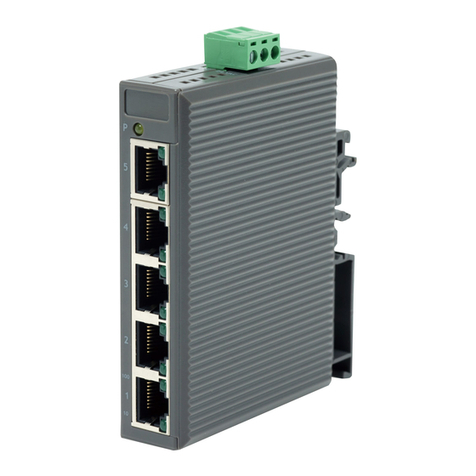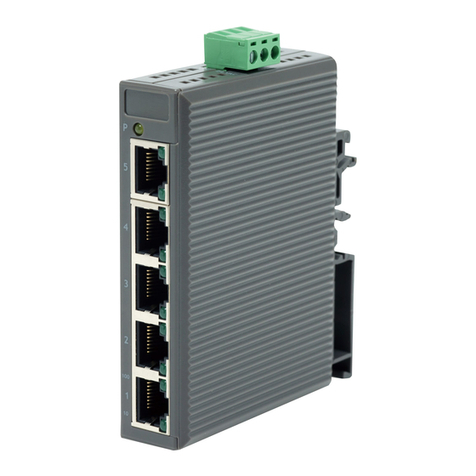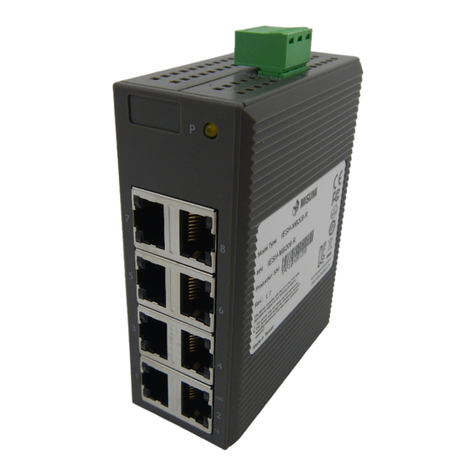Off The 100BaseTX port’s link is inactive.
Auto MDI/MDI-X Connection
The Auto MDI/MDI-X function allows users to connect the switch’s
10/100BaseTX ports to any kind of Ethernet device, regardless of the type of
Ethernet cable being used for the connection. This means that you can use
either a straight-through or cross-over cable to connect the switch to your
Ethernet devices.
Dual Speed Functionality and
Switching
The switch’s 10/100 Mbps switched RJ45 port auto negotiates with the
connected device for the fastest data transmission rate supported by both
devices. All models of EtherDevice Switch are plug-and-play devices; software
configuration is not required at installation, or during maintenance. The
half/full duplex mode for the switched RJ45 ports is user dependent and
changes (by auto-negotiation) to full or half duplex, depending on which
transmission speed is supported by the attached device.
Switching, Filtering, and Forwarding
Each time a packet arrives at one of the switched ports, a decision is made to
either filter or forward the packet. Packets with source and destination
addresses belonging to the same port segment will be filtered, constraining
those packets to one port, and relieving the rest of the network from the need to
process them. A packet with destination address on another port segment will
be forwarded to the appropriate port, and will not be sent to the other ports
where it is not needed. Packets that are used to maintain the operation of the
network (such as the occasional multi-cast packet) are forwarded to all ports.
The switch operates in the store-and-forward switching mode, which eliminates
bad packets and enables peak performance to be achieved when there is heavy
traffic on the network.































